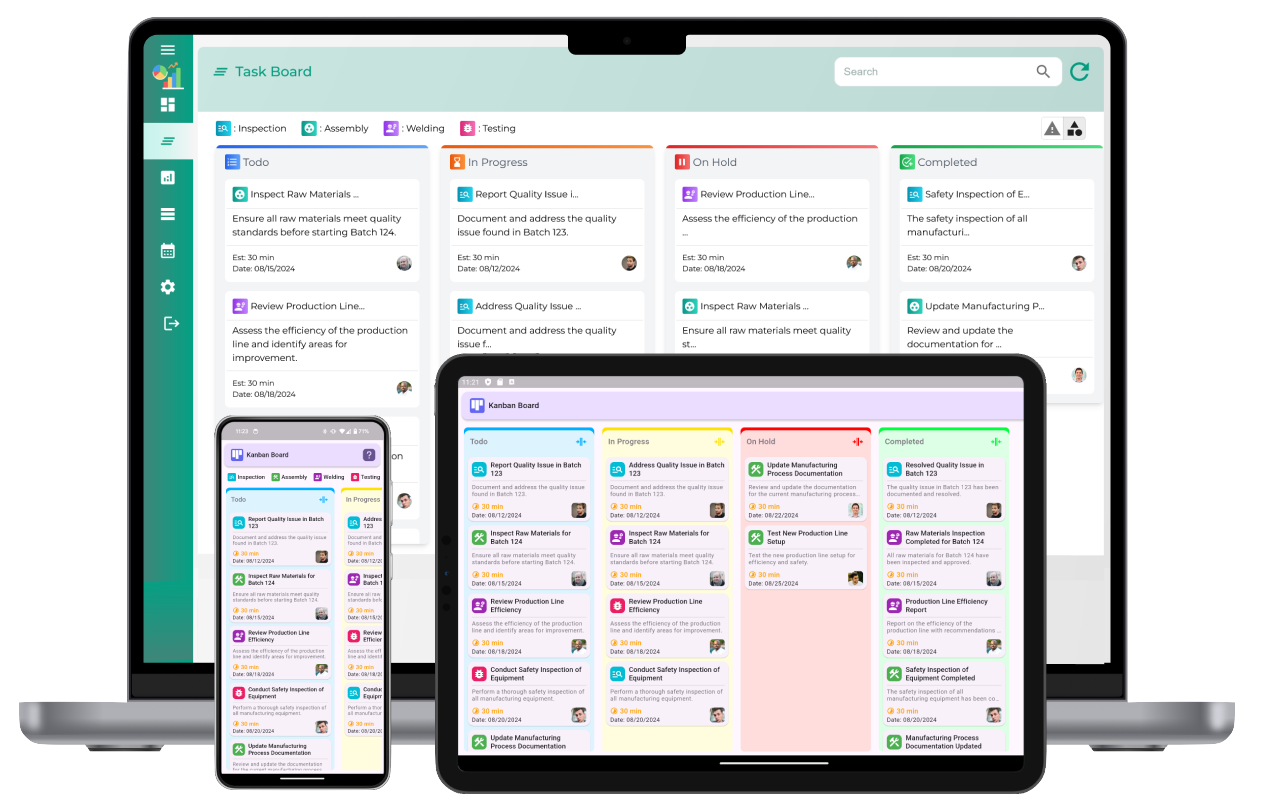In today's fast-paced business environment, organizations are constantly seeking ways to streamline processes, enhance productivity, and deliver value to customers efficiently. Kanban management software has emerged as a powerful tool to achieve these objectives. Rooted in the principles of lean manufacturing and agile methodologies, Kanban offers a visual approach to workflow management, allowing teams to optimize their processes, improve collaboration, and adapt to changing priorities seamlessly.

Understanding Kanban:
Kanban, a Japanese term meaning "visual signal" or "card," originated from the Toyota Production System (TPS) in the 1940s. It was developed as a scheduling system to improve manufacturing efficiency by regulating the flow of materials through production. The core concept of Kanban revolves around visualizing work, limiting work in progress (WIP), and enhancing flow.
At its essence, Kanban utilizes a visual board divided into columns representing different stages of the workflow, with each task or work item represented as a card. These cards move across the board from left to right as work progresses, providing a clear visualization of the workflow and status of each task. The Kanban board typically includes columns such as "To Do," "In Progress," "Testing," and "Done," although the specific column names and workflow stages can vary based on the context of the work being managed.
Key Features of Kanban Management software:
Visual Boards: Kanban software provides customizable, digital Kanban boards that replicate the physical boards used in traditional Kanban systems. Users can create boards tailored to their specific workflows, add columns, and customize card attributes to reflect the stages and details of their process.
Card Management: Work items or tasks are represented as cards on the Kanban board. Users can create, edit, prioritize, and assign cards to team members directly within the software. Cards may include additional information such as descriptions, due dates, attachments, and labels for categorization.
WIP Limits: One of the fundamental principles of Kanban is limiting work in progress to prevent bottlenecks and optimize flow. Kanban software allows teams to set WIP limits for each column on the board, ensuring that work is evenly distributed and that resources are not overburdened.
Collaborative Tools: Kanban software facilitates collaboration among team members by providing features such as comments, mentions, and notifications. Team members can communicate within the context of specific tasks, share updates, and request assistance as needed, fostering transparency and alignment.
Metrics and Analytics: Kanban management software offers built-in analytics and reporting capabilities to track key performance metrics such as cycle time, lead time, throughput, and cumulative flow. These metrics provide valuable insights into process efficiency, identify areas for improvement, and support data-driven decision-making.
Benefits of Kanban Management Software:
Improved Visibility: By visualizing the workflow and status of tasks in real-time, Kanban software provides teams with enhanced visibility into their work. This transparency allows stakeholders to track progress, identify potential issues, and make informed decisions to keep projects on track.
Increased Efficiency: Kanban software helps teams streamline their processes and eliminate waste by identifying and resolving bottlenecks, minimizing idle time, and optimizing resource allocation. By limiting WIP and focusing on completing tasks sequentially, teams can improve throughput and deliver value more efficiently.
Flexibility and Adaptability: Kanban's flexible nature allows teams to adapt to changing priorities, fluctuating demand, and unforeseen challenges effectively. With Kanban software, teams can quickly reprioritize work, adjust WIP limits, and allocate resources based on evolving requirements, enabling them to respond rapidly to customer needs and market dynamics.
Enhanced Collaboration: Kanban software promotes collaboration and communication among team members by providing a centralized platform for task management and coordination. With features such as comments, notifications, and real-time updates, teams can collaborate more effectively, share knowledge, and resolve issues collaboratively.
Continuous Improvement: Kanban fosters a culture of continuous improvement by encouraging teams to identify opportunities for optimization and implement incremental changes to their processes. By analyzing performance metrics and leveraging feedback from stakeholders, teams can iteratively refine their workflows, driving ongoing improvements in productivity and quality.
Kanban Management software offers a powerful solution for optimizing workflows, improving collaboration, and driving continuous improvement within organizations. By visualizing work, limiting work in progress, and fostering a culture of transparency and collaboration, Kanban enables teams to deliver value more efficiently and adapt to changing requirements effectively.